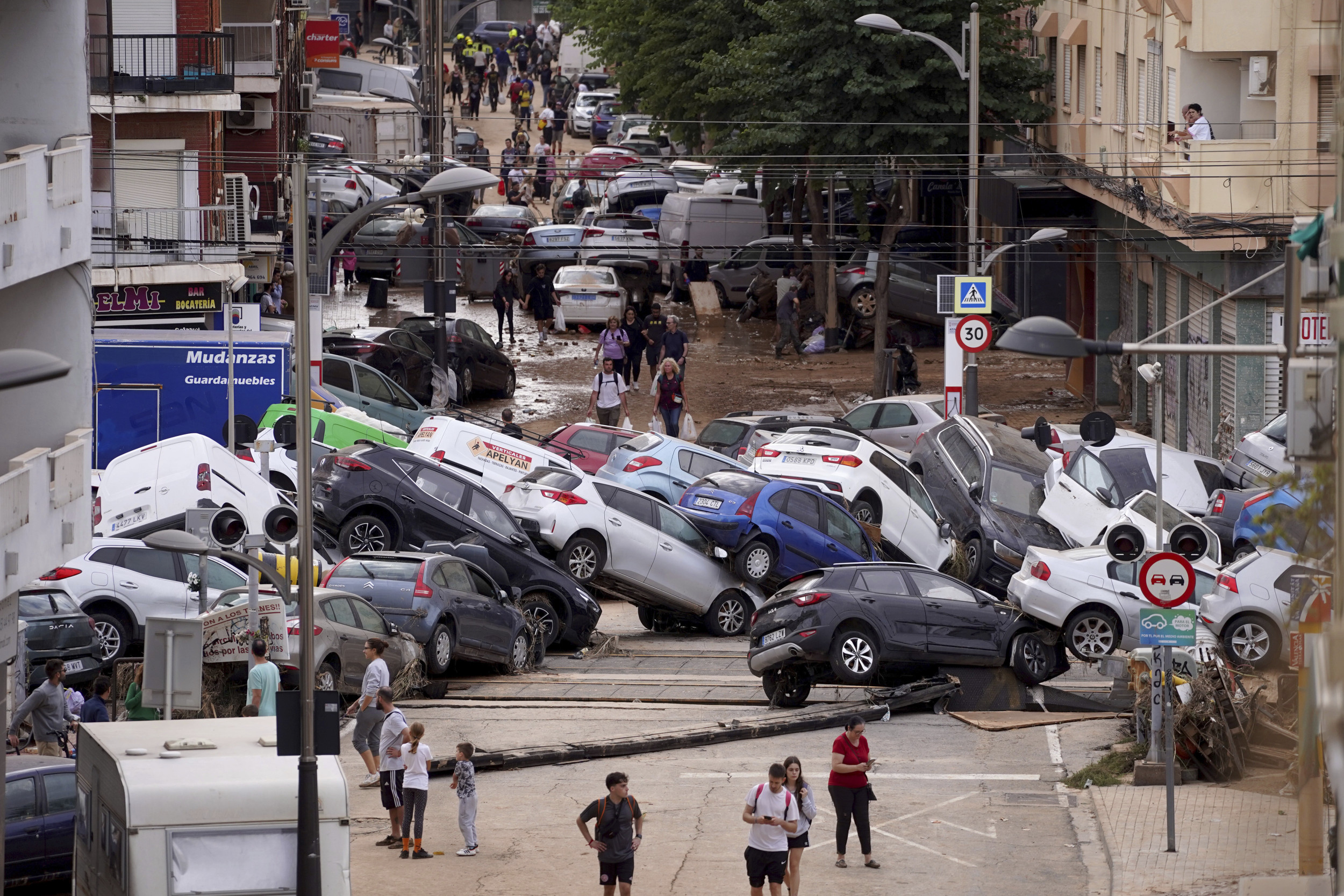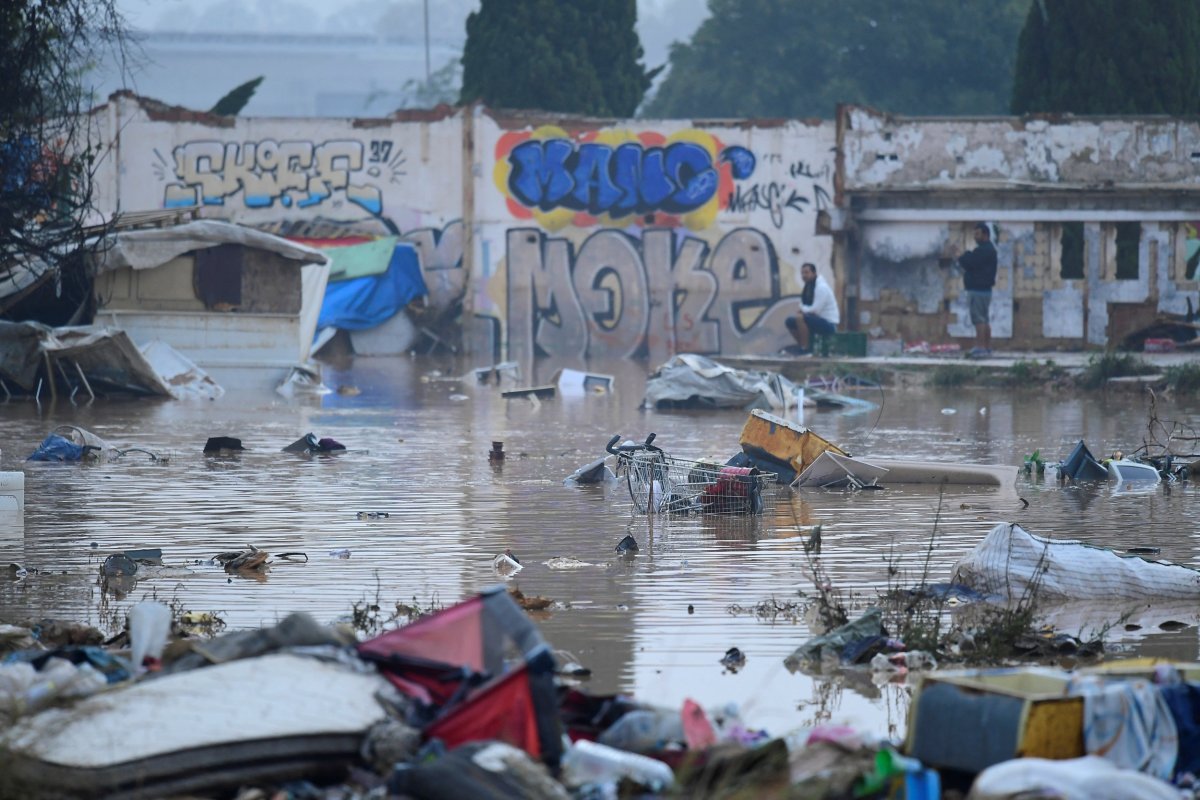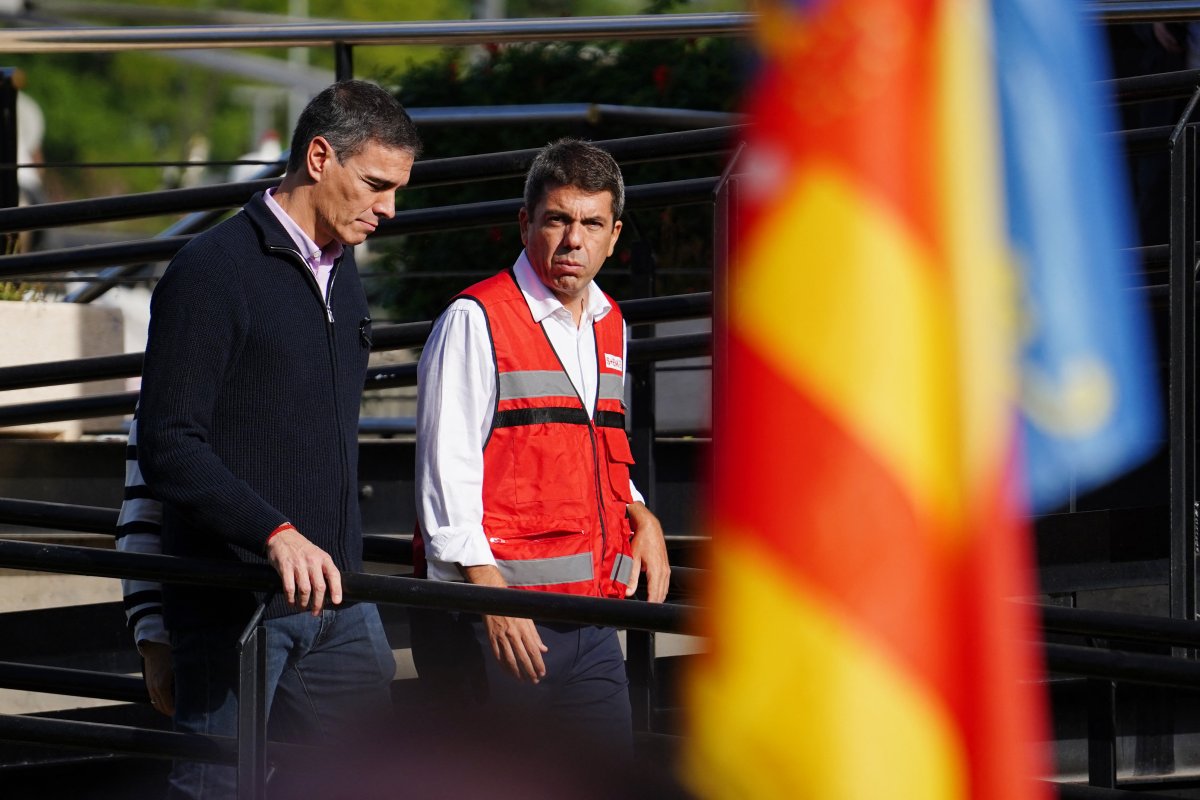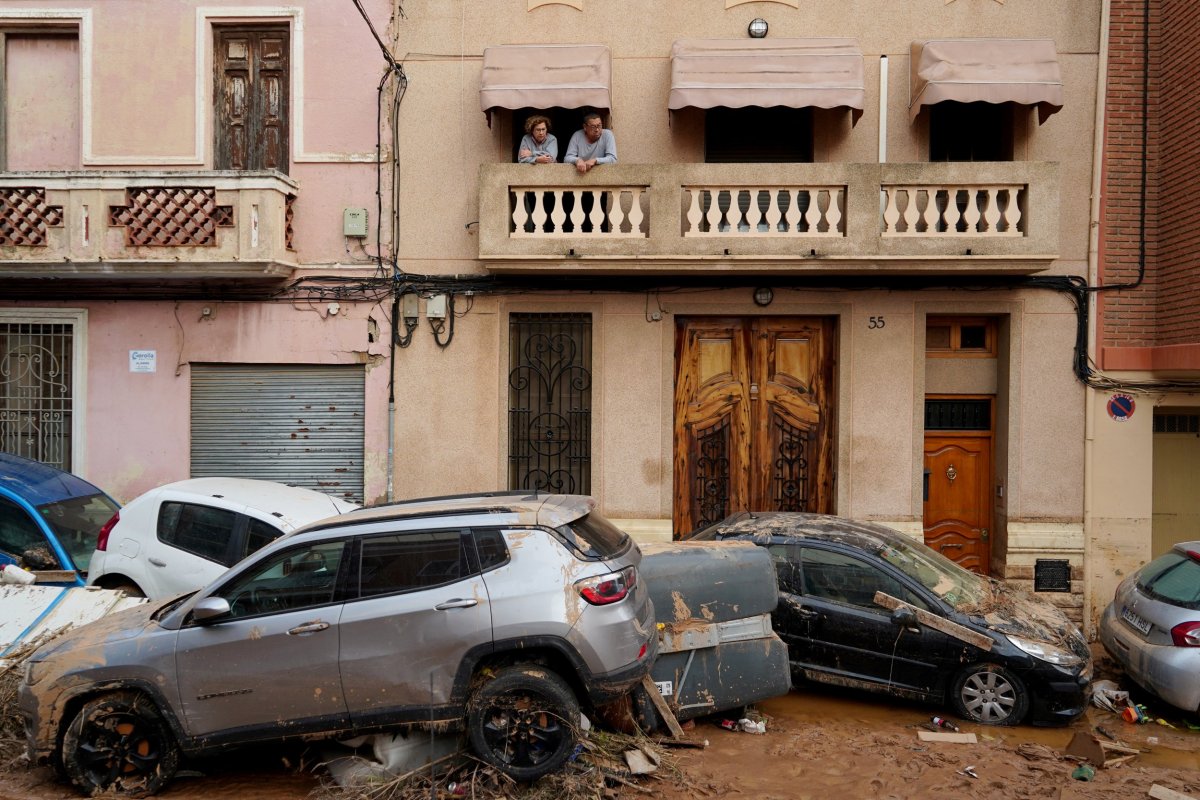
On Tuesday, flash floods caused by heavy downpours in eastern Spain swept away everything in their path in a matter of minutes.
Pictures of vehicles washed into piles have been plastered across social media.
With no time to react, Spaniards were trapped in cars as their homes and businesses were destroyed.
Two days later, authorities have recovered 158 bodies—155 in the eastern Valencia region alone, two in Castilla-La Mancha, and one in Andalusia—and continue to search for an unknown number of missing people.
People have begun to clean up the thick layers of mud that covered houses and streets full of debris, all while facing power and water cuts and shortages of some basic goods.
AP Photo/Alberto Saiz
How Did Spain’s Flash Floods Get So Bad?
Storms concentrated over the Magro and Turia river basins, producing more than a year’s worth of rain in just one day.
The Poyo riverbed produced walls of water that overflowed riverbanks, catching people unaware as they went on with their daily lives, with many coming home from work on Tuesday evening.
In the blink of an eye, the muddy water covered roads and railways and entered houses and businesses in villages on the southern outskirts of Valencia city. Drivers scrambled onto car roofs while residents sought refuge on higher ground.
The downpour has stunned the country. Spain’s national weather service said that in the hard-hit locality of Chiva, it rained more in eight hours than it had in the preceding 20 months, calling the deluge “extraordinary.”
When the authorities sent alerts to mobile phones warning of the seriousness of the phenomenon and asked them to stay at home, many were on the road, working, or covered in water in low-lying areas or garages.
Why Did Spain Produce So Much Rain in One Day?
Scientists trying to explain what happened see two likely connections to human-caused climate change.
One is that warmer air holds and then dumps more rain. The other is possible changes in the jet stream—the river of air above land that moves weather systems across the globe—spawning extreme weather.
Climate scientists and meteorologists said the immediate cause of the flooding is called a cut-off lower-pressure storm system that migrated from an unusually wavy and stalled jet stream.

Jose Jordan / AFP via Getty Images
When this happens, the low-pressure system “stalls” over an area instead of moving along the jet stream. That system simply parked over the region.
This happens often enough that in Spain, they call them DANAs, the Spanish acronym for the system.
“Generally speaking, the jet stream, because of the changes we are seeing due to climate change, is having more pronounced undulations,” Maria Jose Sanz, scientific director of the BC3 Basque Center for Climate Change, told the Associated Press.
Then, there is the unusually high temperature of the Mediterranean Sea. The sea had its warmest surface temperature on record in mid-August, at 28.47 degrees Celsius (83.25 degrees Fahrenheit), said Carola Koenig of the Centre for Flood Risk and Resilience at Brunel University of London.
The extreme weather event occurred after Spain battled prolonged droughts in 2022 and 2023. Experts say that drought and flood cycles are increasing with climate change.
“The same extremely wavy jet stream that is causing the U.S. drought is also responsible for the horrific flooding in eastern Spain,” climate scientist Jennifer Francis at the Woodwell Climate Research Center in Cape Cod told the AP.
Francis pioneers the theory that attributes a wavier and slower-moving jet stream to climate change because the Arctic is warming so much it’s no longer colder than the rest of the planet.
That theory is gaining more acceptance, but the climate science community does not fully embrace it.

MANAURE QUINTERO/AFP via Getty Images
Has This Happened Before?
Spain’s Mediterranean coast is used to autumn storms that can cause flooding, but this episode was the most powerful flash flood event in recent memory.
Older people in Paiporta said Tuesday’s floods were three times as bad as those of 1957, which caused at least 81 deaths and were the worst in the eastern region’s history.
That episode led to the diversion of the Turia watercourse, which meant that a large part of the city was spared of these floods.
Valencia suffered two other major DANAs in the 1980s, one in 1982, with around 30 deaths, and another one five years later, which broke rainfall records.
This week’s flash floods are also Spain’s deadliest natural tragedy in living memory, surpassing the flood that swept away a campsite along the Gallego River in Biescas, in the northwest, killing 87 people in August 1996.
What Has the Spanish Government Said About the Disaster?
Over 1,000 soldiers are aiding rescue operations and distributing aid in the hardest-hit areas, particularly in the Valencia region.
The Valencian regional government has received criticism for its response to the floods. Mobile phone warnings weren’t sent out until 8 p.m. on Tuesday when a red weather alert had already been issued at the national level.
Valencia regional President Carlos Mazón of the conservative Popular Party defended his administration’s management of the crisis, saying, “All our supervisors followed the standard protocol” coordinated by Spain’s central government.

MANAURE QUINTERO/AFP via Getty Images
Mazón is also under fire for his announcement at 1 p.m. on Tuesday that the storm front would “lose strength” by 6 p.m. The opposite occurred.
Prime Minister Pedro Sánchez announced three days of mourning and urged residents to follow emergency services calls.
“All of Spain weeps with all of you…We won’t abandon you,” said Sánchez.
Authorities have not disclosed how many people are still unaccounted for. However, Defense Minister Margarita Robles earlier said the death toll was expected to rise further, given some areas remain inaccessible to rescuers.
This article includes reporting from The Associated Press.
